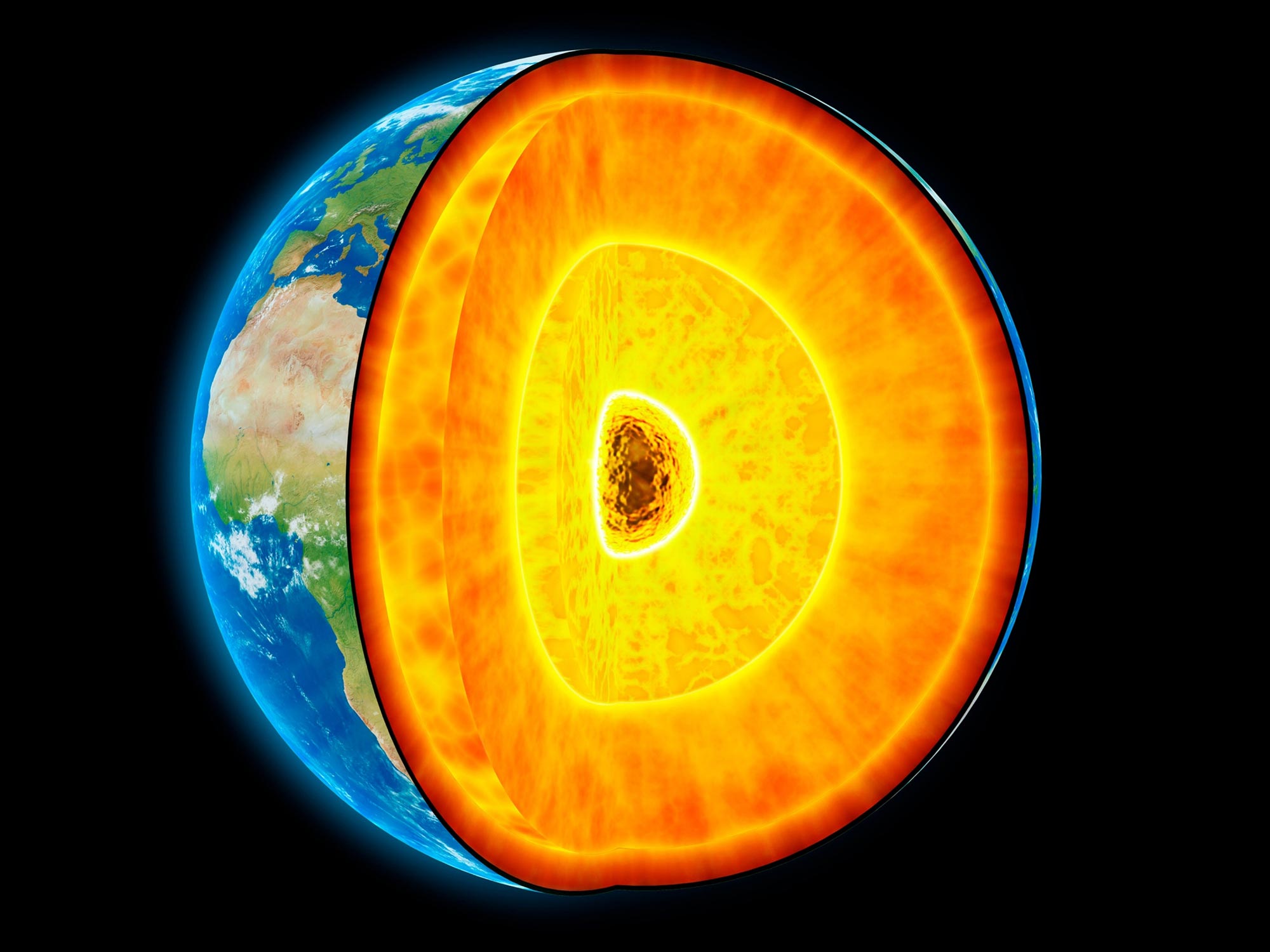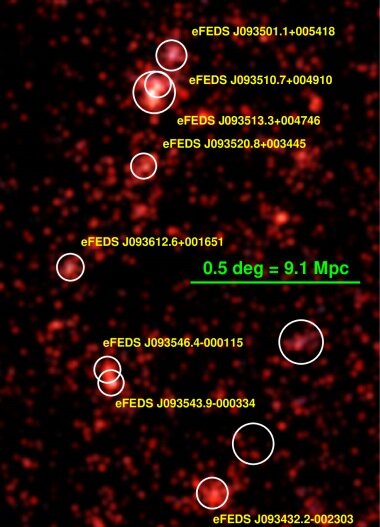
지진파 그룹의 이동 시간에서 1초 차이는 지구 깊숙한 곳에서 무슨 일이 일어나고 있는지에 대한 중요하고 전례 없는 일견을 제공합니다.
이 이론은 지구 외핵의 대류와 행성 자기장을 제어하는 대류의 기능에 대한 우리의 이해를 뒷받침합니다. 과학자들은 대류 플럭스가 어떻게 변하는지 직접 관찰하지 못했습니다. 버지니아 공대의 지질학자 Ying Zhou가 처음으로 증거를 제공합니다.
1997년 5월 남태평양의 케르마덱 제도 지역에 큰 지진이 발생했습니다. 불과 20년이 조금 넘은 2018년 9월에 같은 지역에서 지진 에너지의 파동이 발생하는 두 번째 큰 지진이 같은 위치를 강타했습니다.
버지니아 공대의 지구과학부 지질학자인 Ying Zhou는 20년 간의 지진으로 인해 지진이 분리되었지만 동일한 지역에서 발생했기 때문에 동일한 속도로 지구의 지층을 통해 지진파를 보낼 것으로 예상된다고 말했습니다. 과학.

파란색 경로는 저강도 플럭스가 해당 영역으로 전달되어 지진 속도가 증가한 외부 코어의 영역을 통해 이동하는 코어 관통 지진파를 보여줍니다. 크레딧: 버지니아 공대의 Ying Zhou
그러나 실시간으로 지진 진동을 기록하는 150개 이상의 글로벌 지진 네트워크 관측소 중 4곳에서 기록된 데이터에서 Zhou는 쌍둥이 사건 사이에 놀라운 이상을 발견했습니다. 2018년 지진 동안 SKS파라고 하는 지진파 그룹이 1997년 지진파보다 약 1초 빠르게 움직였습니다.
Blue lines are seismic rays in the outer core, where core-penetrating seismic waves moved through that region faster in 2018 than in 1997. Credit: Image courtesy of Ying Zhou
Scientists also have only been able to speculate about the source of gradual changes in strength and direction of the magnetic field that have been observed, which likely involves changing flows in the outer core.
“If you look at the north geomagnetic pole, it’s currently moving at a speed of about 50 kilometers (31 miles) per year,” Zhou said. “It’s moving away from Canada and toward Siberia. The magnetic field is not the same every day. It’s changing. Since it’s changing, we also speculate that convection in the outer core is changing with time, but there’s no direct evidence. We’ve never seen it.”
Zhou set out to find that evidence. The changes happening in the outer core aren’t dramatic, she said, but they’re worth confirming and fundamentally understanding. In seismic waves and their changes in speed on a decade time scale, Zhou saw a means for “direct sampling” of the outer core. That’s because the SKS waves she studied pass right through it.
“SKS” represents three phases of the wave: First it goes through the mantle as an S wave, or shear wave; then into the outer core as a compressional wave; then back out through the mantle as an S wave. How fast these waves travel depend in part on the density of the outer core that’s in their path. If the density is lower in a region of the outer core as the wave penetrates it, the wave will travel faster, just as the anomalous SKS waves did in 2018.
“Something has changed along the path of that wave, so it can go faster now,” Zhou said.
To Zhou, the difference in wave speed points to low-density regions forming in the outer core in the 20 years since the 1997 earthquake. That higher SKS wave speed during the 2018 earthquake can be attributed to the release of light elements such as hydrogen, carbon, and oxygen in the outer core during convection that takes place as the Earth cools, she said.
“The material that was there 20 years ago is no longer there,” Zhou said. “This is new material, and it’s lighter. These light elements will move upward and change the density in the region where they’re located.”
To Zhou, it’s evidence that movement really is happening in the core, and it’s changing over time, as scientists have theorized. “We’re able to see it now,” she said. “If we’re able to see it from seismic waves, in the future, we could set up seismic stations and monitor that flow.”
What’s next
That’s Zhou’s next effort. Using a method of wave measurement known as interferometry, her team plans to analyze continuous seismic recordings from two seismic stations, one of which will serve as a “virtual” earthquake source, she said.
“We can use earthquakes, but the limitation of relying on earthquake data is that we can’t really control the locations of the earthquakes,” Zhou said. “But we can control the locations of seismic stations. We can put the stations anywhere we want them to be, with the wave path from one station to the other station going through the outer core. If we monitor that over time, then we can see how core-penetrating seismic waves between those two stations change. With that, we will be better able to see the movement of fluid in the outer core with time.”
Reference: “Transient variation in seismic wave speed points to fast fluid movement in the Earth’s outer core” by Ying Zhou, 25 April 2022, Communications Earth & Environment.
DOI: 10.1038/s43247-022-00432-7

“요은 베이컨과 알코올에 대한 전문 지식을 가진 닌자입니다. 그의 탐험적인 성격은 다양한 경험을 통해 대중 문화에 대한 깊은 애정과 지식을 얻게 해주었습니다. 그는 자랑스러운 탐험가로서, 새로운 문화와 경험을 적극적으로 탐구하며, 대중 문화에 대한 그의 열정은 그의 작품 속에서도 느낄 수 있습니다.”










